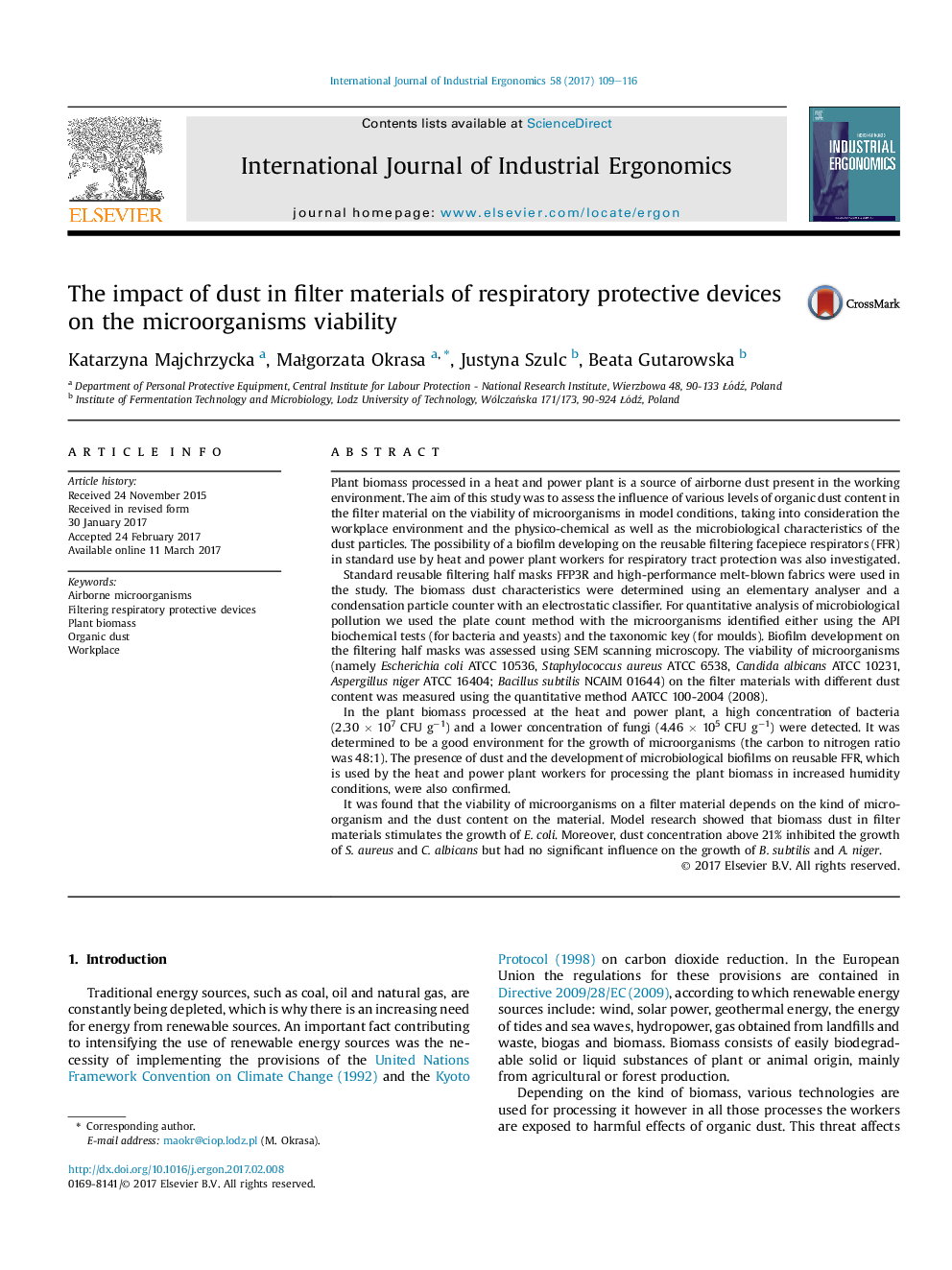| کد مقاله | کد نشریه | سال انتشار | مقاله انگلیسی | نسخه تمام متن |
|---|---|---|---|---|
| 5123726 | 1487417 | 2017 | 8 صفحه PDF | دانلود رایگان |
- Plant biomass processed at the heat and power plant can be a good environment for the growth of microorganisms, which may constitute a health hazard for the plant staff.
- Even if the workers use filtering face piece respirators (FFRs), they may not be fully protected due to the biofilm development in the filter material.
- Viability of microorganisms on filter material depends on the kind of microorganism and the dust content.
- Proper limited re-use, maintenance and storage procedures for FFRs are needed in workplaces where organic dust is present.
- Future research should focus on the development of FFRs with time-dependent biocidal properties.
Plant biomass processed in a heat and power plant is a source of airborne dust present in the working environment. The aim of this study was to assess the influence of various levels of organic dust content in the filter material on the viability of microorganisms in model conditions, taking into consideration the workplace environment and the physico-chemical as well as the microbiological characteristics of the dust particles. The possibility of a biofilm developing on the reusable filtering facepiece respirators (FFR) in standard use by heat and power plant workers for respiratory tract protection was also investigated.Standard reusable filtering half masks FFP3R and high-performance melt-blown fabrics were used in the study. The biomass dust characteristics were determined using an elementary analyser and a condensation particle counter with an electrostatic classifier. For quantitative analysis of microbiological pollution we used the plate count method with the microorganisms identified either using the API biochemical tests (for bacteria and yeasts) and the taxonomic key (for moulds). Biofilm development on the filtering half masks was assessed using SEM scanning microscopy. The viability of microorganisms (namely Escherichia coli ATCC 10536, Staphylococcus aureus ATCC 6538, Candida albicans ATCC 10231, Aspergillus niger ATCC 16404; Bacillus subtilis NCAIM 01644) on the filter materials with different dust content was measured using the quantitative method AATCC 100-2004 (2008).In the plant biomass processed at the heat and power plant, a high concentration of bacteria (2.30 Ã 107 CFU gâ1) and a lower concentration of fungi (4.46 Ã 105 CFU gâ1) were detected. It was determined to be a good environment for the growth of microorganisms (the carbon to nitrogen ratio was 48:1). The presence of dust and the development of microbiological biofilms on reusable FFR, which is used by the heat and power plant workers for processing the plant biomass in increased humidity conditions, were also confirmed.It was found that the viability of microorganisms on a filter material depends on the kind of microorganism and the dust content on the material. Model research showed that biomass dust in filter materials stimulates the growth of E. coli. Moreover, dust concentration above 21% inhibited the growth of S. aureus and C. albicans but had no significant influence on the growth of B. subtilis and A. niger.
Journal: International Journal of Industrial Ergonomics - Volume 58, March 2017, Pages 109-116
